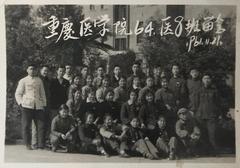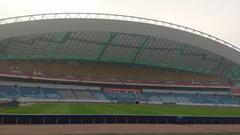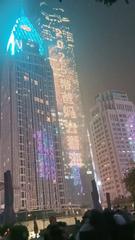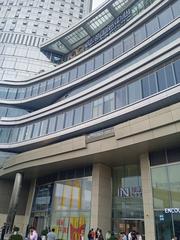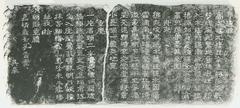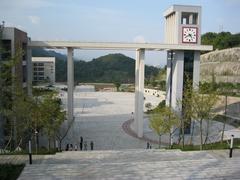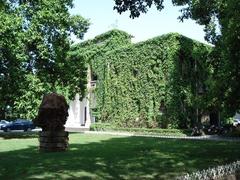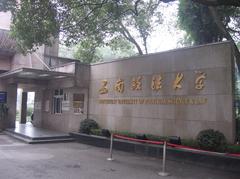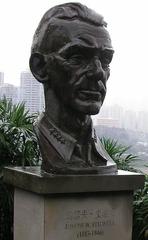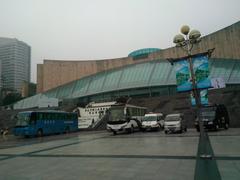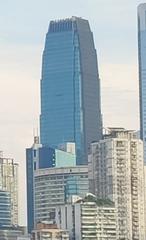Hongtudi Station Visiting Hours, Tickets, and Travel Guide in Chongqing
Date: 04/07/2025
Introduction to Hongtudi Station
Hongtudi Station, nestled in Chongqing’s mountainous terrain, is a marvel of modern engineering and a symbol of the city’s innovative response to geographic challenges. As one of the deepest metro stations in the world—its Line 10 platform reaches nearly 95 meters below ground—it exemplifies Chongqing’s “vertical urbanism” and rapid transformation into a modern metropolis. This station is not only a pivotal interchange within the Chongqing Rail Transit (CRT) system, connecting Lines 6 and 10, but also a unique cultural landmark that showcases the city’s layered history and contemporary vibrancy.
Hongtudi Station is renowned for its extensive escalator network (the largest in China’s metro system), advanced safety features, and seamless integration with Chongqing’s multi-level urban fabric. Its proximity to key attractions like Jiefangbei Central Business District, Hongya Cave, and Chaotianmen Dock makes it a strategic starting point for exploring Chongqing. This guide offers an in-depth overview of Hongtudi Station, covering its history, engineering highlights, visiting hours, ticketing, accessibility, and nearby attractions, along with practical tips for first-time travelers.
For up-to-date information, consult China Daily coverage and the Chongqing Metro official website.
Table of Contents
- Introduction
- Historical Evolution of Hongtudi Station
- Engineering Significance
- Visitor Information
- Frequently Asked Questions (FAQ)
- Conclusion
- Suggested Visuals and Interactive Elements
- Explore More
- Call to Action
- References
Historical Evolution of Hongtudi Station
Origins and Urban Context
Located in Chongqing’s Yuzhong District, Hongtudi Station was conceived as a crucial interchange in the expanding CRT network. The city’s steep hills and intersecting rivers have always posed significant challenges to urban development, making underground transit solutions essential. As Chongqing’s population and economic activities surged in the late 20th and early 21st centuries, the CRT system—and Hongtudi as a key node—became central to the city’s modernization (China Daily).
Construction Timeline and Expansion
The station opened in December 2014 with Line 6 and quickly gained attention for its depth (initially ~60 meters underground). Its importance increased with the addition of Line 10, requiring further excavation to a record depth of 94.46 meters. By 2017, Hongtudi became China’s deepest subway station, only later surpassed by Hongyancun Station (China Daily). The expansion was driven by Chongqing’s need to connect multiple lines efficiently in an environment where surface construction is often impractical.
Role in Urban Development
Hongtudi Station mirrors Chongqing’s shift from a traditional industrial base to a dynamic modern city. As a major interchange, it has alleviated surface traffic congestion, supported economic growth, and enhanced the city’s appeal as a destination for both business and tourism (China Daily).
Engineering Significance
Record-Breaking Depth and Design
Hongtudi Station’s platforms are set 94.46 meters below the surface, placing it among the world’s deepest metro stations, alongside Kyiv’s Arsenalna and Pyongyang’s Puhŭng (China Daily). Its vertical design necessitated the installation of 91 escalators—China’s largest metro escalator network—along with high-capacity elevators for rapid passenger movement (China Daily).
Geotechnical and Construction Challenges
Engineers faced complex geological conditions, requiring the use of tunnel boring machines and traditional drilling to maintain structural integrity. Advanced waterproofing, drainage, and monitoring systems were implemented to combat high groundwater levels and ensure safety.
Ventilation and Passenger Comfort
Due to its depth, Hongtudi Station features robust HVAC systems, platform screen doors, and dynamic ventilation to maintain air quality and temperature, ensuring a comfortable environment regardless of external conditions (ScienceDirect).
Accessibility and Passenger Flow
Redundant escalators, high-speed elevators, and wide corridors streamline movement even during peak hours. Signage in Chinese and English aids navigation, and the station is fully equipped for passengers with mobility challenges.
Vertical Urban Integration
Hongtudi’s design integrates with Chongqing’s multi-level cityscape, connecting varying street levels and blending transit infrastructure with residential and commercial developments (China Daily).
Technological Innovations
The station set new standards for deep-urban transit, with advanced tunneling, real-time monitoring, and digital passenger services. Escalator and elevator systems are equipped with state-of-the-art safety features.
Comparative Global Context
Hongtudi once held the title of China’s deepest metro station but was surpassed by Hongyancun Station (116 meters, opened 2022) (Metro UK). Nevertheless, it remains a global reference point for subterranean engineering.
Cultural and Symbolic Significance
Hongtudi Station is emblematic of Chongqing’s resilience and “mountain city” identity, often featured in media for its scale and urban integration (China Daily).
Visitor Information
Visiting Hours
- Operating Hours: Daily from approximately 6:30 AM to 11:00 PM. For real-time updates, consult the Chongqing Metro official website.
Ticketing and Fares
- Single Journey: Fares start at 2 RMB, increasing with distance. Purchase tickets at self-service machines, counters, or via mobile payment (WeChat Pay, Alipay).
- IC Transit Cards: Yiju Changtong Card offers convenience and discounts, usable on metro, buses, and ferries.
Station Layout and Facilities
- Multi-level Design: Line 6 (~60m deep), Line 10 (~94m deep); allow extra time for transfers.
- Entrances/Exits: Multiple, with bilingual signage and connections to bus/taxi services.
- Amenities: Clean restrooms, drinking fountains, seating, convenience stores, vending machines, and real-time information displays.
- Security: Standard screenings, CCTV monitoring, emergency intercoms, and fire safety measures.
Accessibility
- Multiple elevators and barrier-free restrooms.
- Tactile paving for visually impaired passengers.
- Wide escalators and clear signage.
Navigation and Travel Tips
- Allow 10–15 minutes for transfers between Lines 6 and 10 due to depth.
- Use elevators for mobility needs or heavy luggage.
- Avoid peak hours (7:30–9:30 AM, 5:00–7:30 PM) for a more comfortable experience.
- Carry destination names in Chinese or use translation apps.
Nearby Attractions
- Jiefangbei CBD: Chongqing’s main commercial center.
- Hongya Cave: Iconic stilted riverside complex.
- Chaotianmen Dock: Scenic river cruise departure point.
- All easily accessible via metro, bus, or short taxi ride.
Digital Tools and Resources
- Official Chongqing Metro App: Real-time navigation, route planning, fare calculation.
- Mobile payments widely accepted.
Frequently Asked Questions (FAQ)
Q1: What are Hongtudi Station’s operating hours?
A1: Approximately 6:30 AM to 11:00 PM daily.
Q2: How much do tickets cost?
A2: From 2 RMB, increasing with distance.
Q3: Is Hongtudi Station accessible for wheelchair users?
A3: Yes, with elevators, barrier-free restrooms, and tactile paving.
Q4: How long does a transfer between Line 6 and Line 10 take?
A4: Allow 10–15 minutes due to station depth.
Q5: Are food and restrooms available?
A5: Yes, with clean facilities and convenience stores inside the station.
Conclusion
Hongtudi Station is more than a transit hub—it represents Chongqing’s ingenuity, resilience, and the city’s embrace of vertical urbanism. Its engineering, accessibility, and proximity to cultural attractions make it a unique destination for both daily commuters and visitors. By planning your trip with knowledge of the station’s layout, operating hours, and ticket options, you’ll ensure a smooth and enriching experience.
Stay updated with official apps and resources, and don’t miss exploring nearby attractions like Hongya Cave and Jiefangbei to make the most of your Chongqing visit.
Suggested Visuals and Interactive Elements
- High-resolution images of Hongtudi’s escalators and platforms (with descriptive alt text).
- Interactive maps showing station location and nearby attractions.
- Virtual tour videos highlighting engineering features.
Explore More
For more about Chongqing’s metro and historical sites, see our related guides:
Call to Action
Ready to explore Hongtudi Station? Download the Audiala app for offline maps, real-time metro updates, and exclusive guided tours. Follow us on social media for the latest travel tips and Chongqing insights!
References
- Hongtudi Station: Visiting Hours, Ticket Info, and Engineering Marvel in Chongqing, 2024, China Daily (url website)
- Hongtudi Station: Engineering and Urban Integration, 2024, China Daily (url website)
- Ventilation and Air Quality in Deep Metro Stations, 2024, ScienceDirect (url website)
- World’s Deepest Underground Station Takes 10 Minutes Just to Reach Platform, 2025, Metro UK (url website)
- Hongtudi Station Chongqing: Visiting Hours, Tickets, and Essential Travel Guide, 2024, Chongqing Metro Official Resources (url website)

